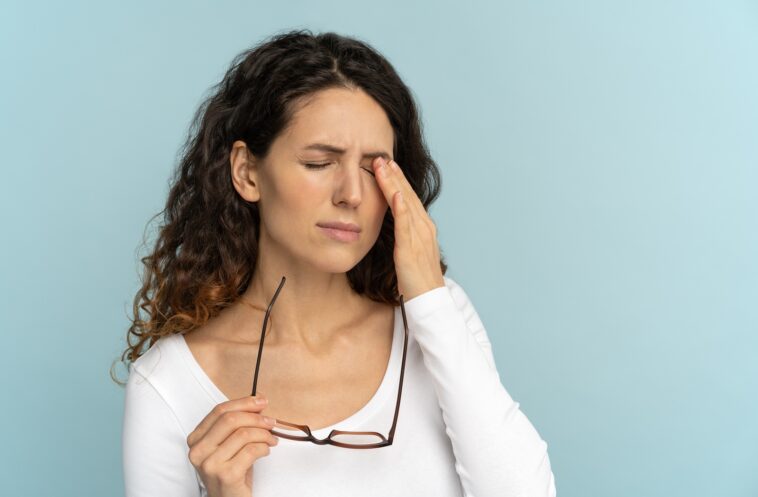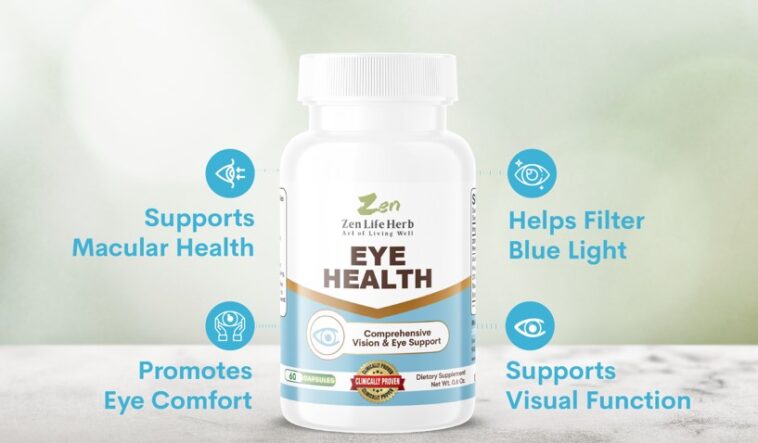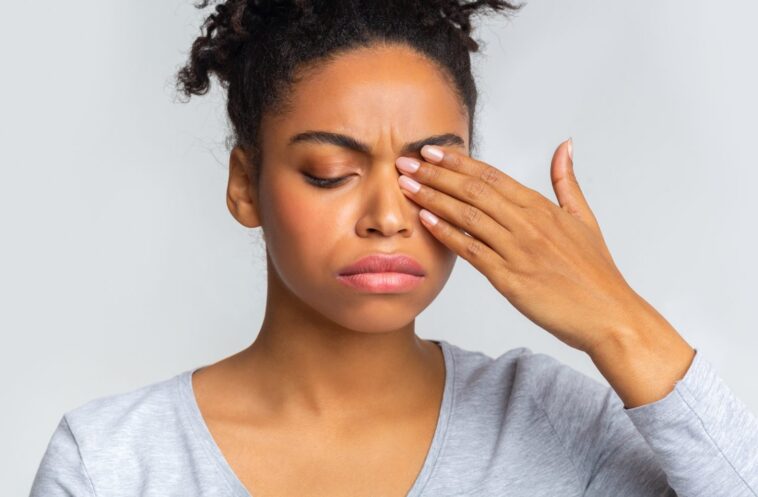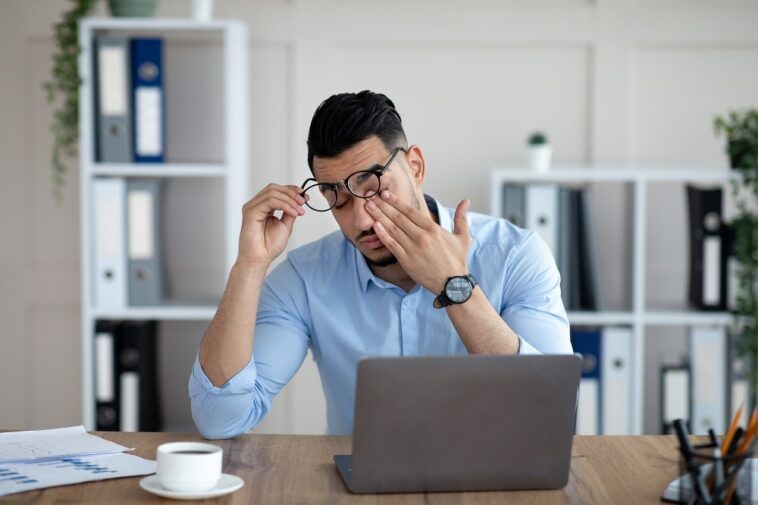You might not feel it right away, but daily habits like late-night scrolling, skipping breaks, or working in poor lighting slowly wear down your eyes. It’s not just screen time—it’s how you use screens, how often you blink, and even what the air around you is like.
The strain builds quietly, but the good news is it’s fixable. With a few small, smart changes, you can protect your vision without overhauling your lifestyle. Here’s how to spot the habits that may be harming your eyes—and what to do instead.
Key Highlights
- Common tech habits are slowly stressing your eyes—even if they feel “fine.”
- Blue light and screen glare aren’t just buzzwords—they impact focus, sleep, and tear film stability.
- Dry air, skipped blinks, and even your lighting setup can quietly degrade your vision.
- Minor changes—like blink awareness and screen breaks—can lead to real relief.
- The right eye health supplement may support daily resilience against visual stressors.
Introduction: Your Eyes Are Tired, Even If You Don’t Notice

If your eyes could talk, what would they say at the end of your average Tuesday?
They probably wouldn’t scream. Vision strain doesn’t always show up with pain or drama. Instead, it creeps in quietly—through subtle dryness, slower focus, or that gritty sensation you chalk up to “just being tired.”
But the truth is, many of us are unintentionally stressing our eyes every day. We repeat the same small habits—looking at screens too long, forgetting to blink, ignoring dry air—that slowly wear down our visual system.
Let’s look at the daily routines that may be compromising your eye health, and more importantly, how to fix them without overhauling your entire lifestyle.
Staring Too Long Without Looking Away
Digital devices aren’t going anywhere. Most of us spend 6 to 10 hours a day glued to screens—laptops, phones, tablets, smart TVs. The problem isn’t just that we’re looking—it’s how long and how intensely.
When you focus on a screen, your blink rate can drop by up to 60%. That means your tear film (the thin moisture layer that protects and nourishes your eyes) evaporates faster, leaving your eyes dry, red, and fatigued.
Quick fix: Try the 20-20-20 rule. Every 20 minutes, look 20 feet away for at least 20 seconds. Even better? Actually get up and walk around. Give your eyes a moving focal point.
Ignoring the Role of Nutrition in Visual Resilience
Vision isn’t just mechanical—it’s biological. Your eyes rely on a supply of key nutrients to maintain healthy tissues, protect against light damage, and stay lubricated.
Lutein, zeaxanthin, vitamin A, and omega-3s are some of the most researched compounds for ocular health. Yet, many diets fall short—especially if meals are rushed or screen-focused work routines don’t allow for balanced nutrition.
That’s where targeted support can help. A trusted eye health supplement may offer the nutrients your visual system lacks on busy days. While supplements shouldn’t replace a healthy diet, they can help reinforce your baseline—especially when work, stress, or age puts more strain on your eyes than usual.
Look for formulas with carotenoids (like lutein), antioxidants (like vitamin C and E), and zinc for added cellular protection.

Scrolling in the Dark: The Bedtime Mistake
Ever lie in bed and scroll your phone until your eyes sting? That intense contrast—bright screen against dark room—forces your pupils to constantly constrict and dilate. It’s an exhausting workout for your eyes right before they’re supposed to rest.
This habit doesn’t just interfere with melatonin production (disrupting sleep), but also stresses your retina, especially when blue light is unfiltered.
What helps: Use your phone’s night shift or blue light filter setting after sunset. Even better, cap screen time 30 minutes before bed and let your eyes transition into the dark gently—just like your brain needs to.
Not Adjusting Screen Brightness or Font Size
Your screen shouldn’t be the brightest thing in the room. Yet often it is—especially in dark offices, airplane cabins, or late-night editing sessions.
Overly bright displays cause glare and contribute to eye fatigue. Similarly, reading tiny fonts (especially while squinting) puts a constant load on your ciliary muscles—the ones responsible for adjusting focus.
To do now:
- Match your screen brightness to your environment. Many devices auto-adjust, but they don’t always get it right.
- Increase your default font size for reading-heavy tasks.
- Use “dark mode” or high-contrast settings to ease strain, especially during nighttime use.
Air That’s Drier Than You Think
Climate control is great for productivity—less so for tear production. Air conditioning and heating systems reduce indoor humidity, which accelerates tear evaporation. That’s why your eyes might burn at the end of a long day in a sealed office or co-working space.
Signs it’s affecting you: scratchy eyes, blurry vision that clears after blinking, or reflexive squinting.
Solutions that help:
- Use a small desktop humidifier at your workstation.
- Avoid direct airflow from AC vents or fans near your face.
- Apply preservative-free artificial tears if your eyes feel dry mid-day.
Forgetting to Blink—Especially During Concentrated Work

This might sound silly, but blinking is one of the most neglected physical acts in modern life. When you’re deep in focus—editing, gaming, or even attending back-to-back Zoom meetings—you blink less.
That reduced blink rate means less lubrication and increased exposure to environmental irritants.
Tip: Place a sticky note near your screen that says “Blink.” It seems small, but that visual cue can help reestablish the reflex until it becomes subconscious again.
Wearing the Wrong Glasses (Or None at All)
Some people still “tough it out” without glasses for mild refractive errors. Others use outdated prescriptions or skip protective coatings.
Even if you don’t feel blurry vision, straining to focus—especially at close range—can lead to headaches and fatigue. Plus, many standard glasses now include blue-light filtering or anti-reflective coatings that reduce glare and improve comfort under artificial lighting.
What to check:
- Are your glasses up-to-date?
- Do they have coatings that match your current screen use?
- Should you consider task-specific glasses (e.g., single-vision lenses for near work)?
Skipping Morning or Evening Eye Routines
We wash our face, brush our teeth, maybe apply some moisturizer. But do you ever wash your eyes?
Between pollution, screen time, and allergens, your eyelid margins accumulate debris that can lead to dry eye or meibomian gland dysfunction (these glands secrete the oil layer of your tears).
Try this once daily:
- Use a warm compress on closed eyelids for 3–5 minutes.
- Gently massage the eyelid margins.
- Rinse with preservative-free saline or a dedicated eyelid cleanser.
This small ritual can reset tear balance and prevent inflammation.
See Your Life, Not Just the Screen
You don’t have to give up your job, your shows, or your social media. But maybe you can pause for 20 seconds and look out a window. Drink more water. Check your lighting. Blink more. And yes, add a quality eye health supplement if your diet (like most of ours) could use a visual boost.
It’s less about dramatic changes—and more about seeing your habits clearly.





